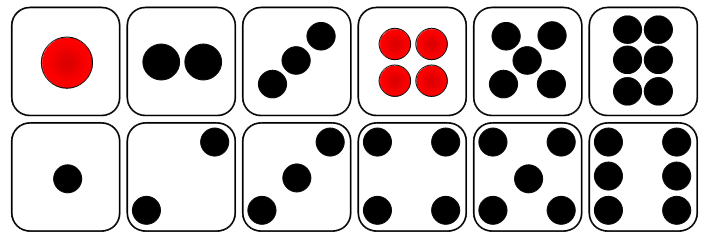(related to Definition: Laplace Experiments and Elementary Events)
A well-known example of a Laplace experiment is rolling a six-sided dice, for which each rolling a number \(\omega\in \{1,2,3,4,5,6\}\) has the probability of \(\frac 16\).

For the event \(A\)="the number of rolled dots is even" we have then \(p(A)=\frac 36=\frac 12\), because there are \(3\) even numbers (favorable elementary events) in relation to \(6\) events in total.
For the event \(B\)="the number of rolled dots is smaller then 5" we have then \(p(B)=\frac 46=\frac 23\), because there are \(4\) numbers smaller then \(5\) (favorable elementary events) in relation to \(6\) events in total.